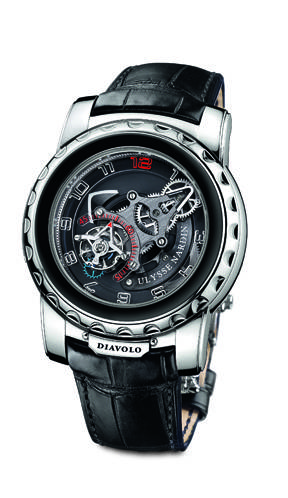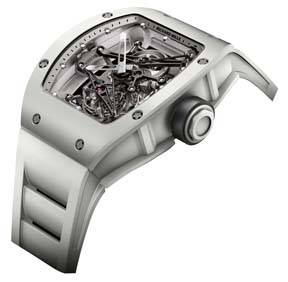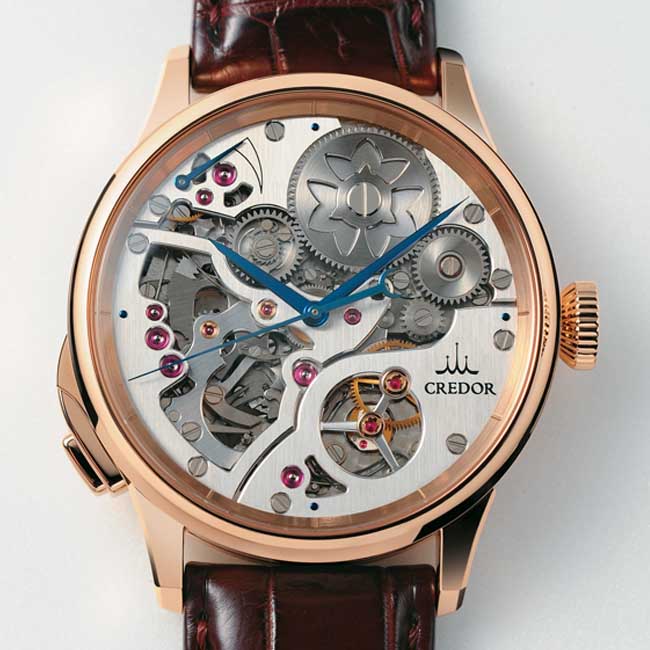
Today’s top tier watchmakers still make drop-dead gorgeous classical tourbillon watches, but they also use the complication as a basis for a whole new range of variations on the original design that would have amazed Breguet himself.
Go into any boutique that sells luxury watches and you’ll be confronted with a scale of prices that rise sharply as watches become more complicated. At the pinnacle is the complication known as the tourbillon (French for “whirlwind.”) If you’ve never seen one before, one look and you’ll remember it forever; it’s a rotating spiderweb of delicately polished steel, on which the escapement (the parts of the watch that make it accurate, and that make it tick) is mounted. If you love the romance of machines –and you do, or you wouldn’t be in there– it’ll be love at first sight. The Tourbillon has the ability to weaken the knees and open the wallet of any real watch aficionado.
There’s reason behind the romance –and history too. The tourbillon is 210 years old this year. It was patented in 1801 by none other than Abraham-Louis Breguet, the Da Vinci of watchmaking, who invented or improved just about every complication in horology and whose clients included European royalty both born and self-made (the family of Napoleon Bonaparte were major clients.) Breguet had an eye for beauty. His watches are a high water mark in European watch design; his style has been imitated ever since. But the Tourbillon was invented to solve a problem, not entertain the eye.
That problem is gravity. A full technical explanation can fill a book, but the gist is that a watch runs most accurately when no outside influences upset the regularity of its tick, and gravity tugs the escapement in different directions depending on the position the watch is in. It’s a testament to how precise the watchmaker’s art is that even the minute force generated by gravity on the few milligrams of metal that make up the escapement can cause noticeable inaccuracy; and Breguet decided to do something about it.
Mounting the escapement on the tourbillon –the rotating frame is called a cage or carriage –means that it’s never in any one position for long; the effects of gravity are averaged out to a single number, making the job of adjusting the watch to make up the difference much easier. The problem is that they’re extremely hard to make. A watch runs on energy from a spring, and as that energy goes through the gears inside on its way to the escapement, it’s reduced dramatically. That means the tourbillon has to be super-light and super-precise in construction, to use as little energy as possible. How hard are they to make? So hard that for the first two centuries of their existence less than 1,000 are thought to have been constructed. Nearly all which are now in museums or private collections where they’re guarded as jealously as only crown jewels can be.
Modern high precision machine tools have made it slightly easier to make a tourbillon, but as with topnotch watchmaking itself, the best are still both rare and king’s ransom expensive. Today’s top tier watchmakers still make drop-dead gorgeous classical tourbillon watches, but they also use the complication as a basis for a whole new range of variations on the original design that would have amazed Breguet himself. Aficionados argue ad nauseam over whether the invention has any real benefit in a wristwatch (tourbillons were designed for pocket watches, which mostly spend their time in a vertical position) but what nobody debates is the sheer beauty of the complication. A fact that, after 200 years, has fascination as fresh as ever.
The Ulysse Nardin Freak Diavolo
The Freak is just over a decade old, and watch savants are still scratching their heads. Though it fits the general idea of what a tourbillon is –a watch in which the escapement rotates –the original Freak went Breguet one better by making the entire movement rotate. Turning once per hour, the movement also acts as the minute hand of the watch –and the Freak is so different from any other tourbillon out there that connoisseurs still can’t agree on how to classify it. With the Freak Diavolo, UlysseNardin’s done the seemingly impossible –gone the original design one better by putting a traditional tourbillon inside the already rotating movement. Double the pleasure, double the fun. It’s a tourbillon squared, and it could only have come from UlysseNardin. $153,000
The Richard Mille RM 038 Bubba Watson
Tourbillons are beautiful, but they’re delicate works of art that should be worn only occasionally, and coddled when they are worn, right? Wrong, says Richard Mille, whose tourbillons have long been noted for their unusual ability to take a beating that would leave most other tourbillons in pieces – most notably, the sold-out RM027 which was worn during the 2011 tournament season by Rafael Nadal. His latest tough-guy tourbillon is the RM038, named for pro golf power hitter Bubba Watson; its magnesium-aluminum alloy case is light and super strong, and the movement insulates the tourbillon from the violent shockwave generated by Watson’s drive with a suspension strut system that recalls the construction of the F1 cars that were Richard Mille’s original inspiration. $590,000


























